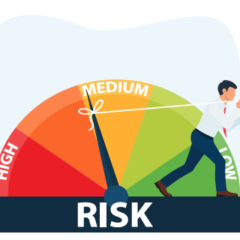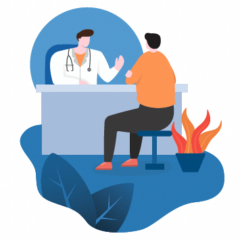Published on
Patients Are Asking: How Should I Manage a Negative Experience at the Emergency Department or During Follow-Up?
Experiencing a blood clot can be terrifying and very overwhelming. Whether you’ve recently been diagnosed with a blood clot or have been living with a blood clotting condition for a while, you likely remember your first clot very well.
Perhaps you went to the emergency department (ED) in a rush, not knowing what was happening. At the ED, you may have talked to a lot of different clinicians who performed many tests and procedures. It may have all felt like a blur.
Before you were discharged, were all of your questions answered? Were your test results explained? Or did you leave with more questions than when you arrived?
Perhaps when you saw your clinician for follow-up, your questions were answered and you felt more comfortable about what was going on and the treatment you needed…or maybe you felt then, and still feel, very uncertain and confused about your health.
You are not alone.
NATF understands the enormous challenges people face when first diagnosed with venous thromboembolism (VTE), which includes deep vein thrombosis (DVT) and pulmonary embolism (PE) – and we want to help!
We are developing a comprehensive resource for people newly diagnosed with blood clotting conditions called Thriving with Thrombosis: A Toolkit for Patients Newly Diagnosed with VTE. The goal of this toolkit is to provide people with the knowledge they need to understand and manage their VTE diagnosis, communicate effectively with their clinicians, and participate in treatment decision making.
The NATF toolkit will contain comprehensive web-based articles, guides, and videos that will walk through key timepoints in the VTE journey from the point of diagnosis through the first 3-6 months. These educational resources can help you and your loved ones better understand your condition, and will provide tools to improve communication with your doctors, such as questions to ask during visits to help you have empowered conversations.
The toolkit will also include information on:
- Physical and mental health effects of VTE
- Discharge planning for people hospitalized with VTE
- Anticoagulant education
- Lifestyle considerations
- Considerations for women’s and transgender health
NATF is working with clinicians, communication experts, mental health experts, and people like you to make sure everyone is well equipped on their VTE journey starting from day one.
We are very excited to bring you this new set of tools, and will let you know when it’s ready!
Visit our website to access our current resources for people with newly diagnosed VTE, including a guide to The First Six Months after a blood clot.
*Originally published in The Beat — June 2024. Read the full newsletter here.



